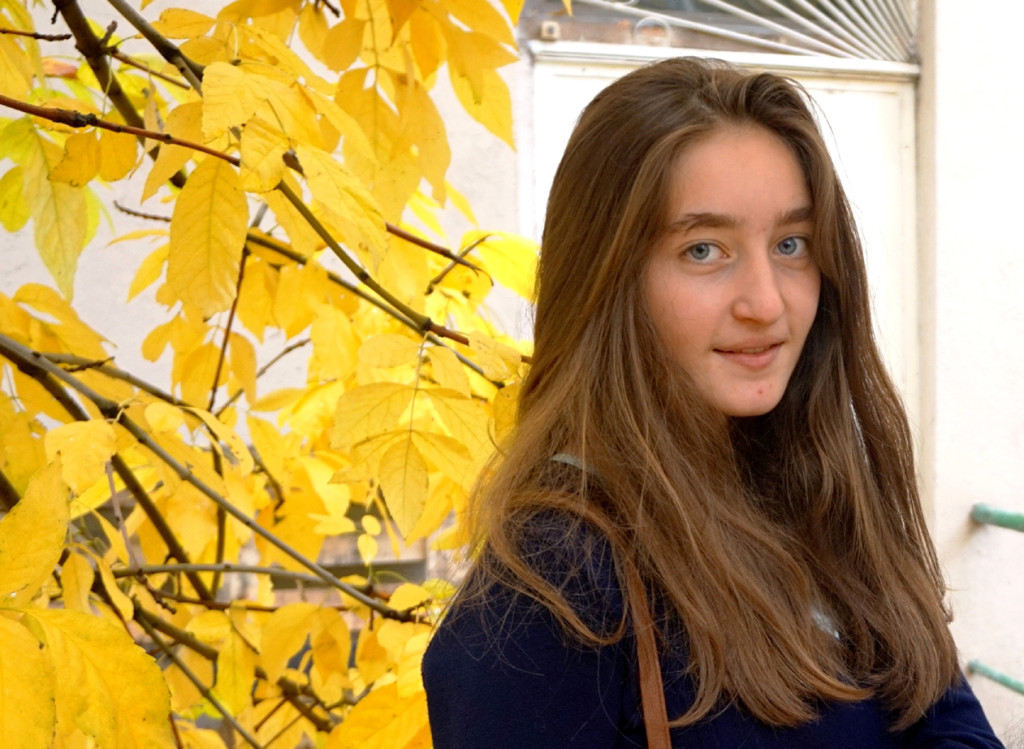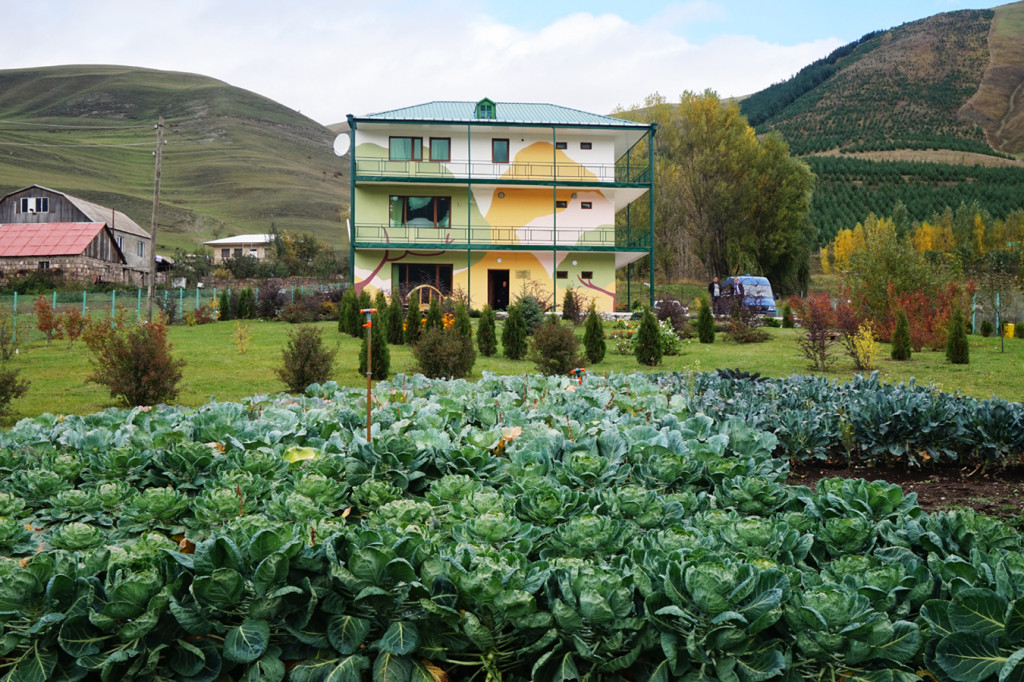2015: A Record-Breaking Year for Environmental Education in Armenia
February 6, 2016By Ani Melkonian
YEREVAN—Environmental education has been one of Armenia Tree Project’s (ATP) strategic priorities since 2005, with trainings and workshops conducted all over Armenia. Thousands of schoolchildren visit ATP’s two education centers sponsored by the Ohanian family of Boston. The centers—one located on the grounds of the Karin Nursery and another in Margahovit Village—provide interactive lessons focused on all aspects of the environment.

Melanya Sarukhanyan is an active member of ATP’s eco-club in Margahovit, a village in the northern region of Lori.
2015 was a record-breaking year as more students visited the centers than ever before. Sixty-four school groups (a total of 1,646 students) from Yerevan, Kotayk, and Armavir attended classes at the Michael and Virginia Ohanian Environmental Education Center in Karin, which significantly exceeds the number from previous years. In Margahovit, 74 school groups (1,971 students) visited the Michael and Virginia Ohanian Center for Environmental Studies from Lori, Tavush, Gegharkunik, and Shirak.
“Our approach is that planting trees is not enough when there is limited awareness about environmental issues in the country,” explains Alla Sahakyan, education manager. “Through our environmental education program, ATP aims to raise a responsible generation of Armenians that will take on their roles as caretakers and protectors of the environment. To support that goal, our team works hard to instill respect, care, and understanding towards nature in the youth.”
Melanya Sarukhanyan is a 13-year-old schoolgirl from Margahovit and a regular at the Ohanian Center. She’s a member of ATP’s eco-club, the inauguration of which in 2012 was cause for great excitement in the village. Melanya was introduced to the club at school by her biology teacher, Gayane Markaryan, who also happens to be the eco-club trainer. The club has 35 members in 2 age groups—middle and high school students—and they meet 3 times a week. “Making the extra effort after school is no inconvenience for the students because they enjoy learning new things in a stimulating and peaceful environment,” says Sahakyan.
The Ohanian Center is like an illustration straight out of a children’s book. The building itself is camouflaged to reflect the surrounding green rolling mountains, with the Hrant Dink Memorial Forest in the background and the Mirak Family Reforestation Nursery within sight of the gardens. The front yard is a beautifully laid out garden and an exhibition of the children’s projects. The delicate flowers, plants, and vegetables are a result of all that the children are learning in the eco-club.

ATP’s Michael and Virginia Ohanian Center for Environmental Studies is a ‘living laboratory’ for environmental education in northern Armenia.
Here Melanya has learned how to make compost, how to graft fruit trees, and how to plant and care for trees. She’s also learned about organic insect control and growing organic vegetables. ATP has introduced broccoli and Brussels sprouts to the village, where only cabbage and potatoes were grown in the past.
Students also study the importance of bees in an ecosystem, the damage of pesticides and herbicides to bee colonies, bee care, and honey production.
“The goal is to connect children with the environment. We want them to value their natural heritage,” adds Sahakyan.
When asked what she likes about the eco-club, Melanya says they put into practice things they learn in theory. “We use modern and at the same time eco-friendly technology, which we don’t have at school. We watch slideshows and videos together…It’s more fun that way. I’ve learned that nature gives us life, so we must care for it.”
A vital part of ATP’s education program is for students to make a connection between what they learn and what occurs in their daily lives. They apply their knowledge by making compost in their gardens and by recycling paper and plastic bottles. “I get a lot of phone calls from parents complaining because their kids won’t allow them to throw trash away,” jokes Sahakyan. “That’s how I know our work is paying off.”
In addition to hosting local students, ATP hosts diasporan youth as part of the Building Bridges program in the United States. Students from Armenia meet their peers from the diaspora and together learn about their natural heritage and a little bit about each other. In 2015, ATP hosted six school visits from the diaspora, which included tree plantings at historical locations like Sardarabad. The environmental education program also includes the training of teachers to use the “Plant an Idea, Plant a Tree” manual published by ATP and approved by the Ministry of Education, and conducting lessons at a number of workshops and summer camps.
Since its inception in 1994, ATP has planted more than 4.9 million trees, established 3 nurseries and 2 environmental education centers, and greened villages, churches, parks, and open spaces throughout Armenia. In the process, the organization has provided employment for hundreds of people and provided vital resources to thousands of villagers.
For more information, visit www.armeniatree.org.
Source: Armenian Weekly
Link: 2015: A Record-Breaking Year for Environmental Education in Armenia